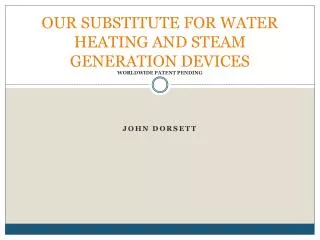How Temperature is Regulated in Thermal Store Water Heaters?
Temperature is one of the most widely measured and controlled variable in
any process. This is because there are several machines in which proper
functioning and the required product is achieved only if the temperature is
accurately measured and regulated. A Temperature gauge performs the
important task of temperature measurement and monitoring. They
function on the simple principle of thermal expansion or contraction of any
element with a change in temperature and can be used to measure
temperature of oil, water, flue-gas, etc.
An important household appliance in which temperature monitoring plays
an important part is a water heater. In conventional water heaters, hot
water is stored in a tank. Alternatively, "instant", tankless water heaters
supply hot water immediately on demand. Unlike conventional water
heaters, these do not have a tank in which water is stored and heated; they
heat the water as it flows through the pipe.
Some of the important components of a Thermal Store Water Heaters are:
pipes to let the cold water in and hot water out, a thermostat to regulate
the temperature, heating elements to heat the water and a pressure relief
valve to keep the tank from exploding due to overpressure. Two of the
most significant components that help in the making of any water heater
are the temperature gauge and the flow gauge. As their names indicate,
they measure the temperature and flow rates of water, respectively.It is the thermostat that utilizes the temperature gauge, a temperature
monitor. A specific temperature range is set, until which the water is to be
heated. When the heater is switched on, the heating elements, along with
the thermostat, get into action. When the lever on the thermostat is moved
to turn up the heat, its in-built coil rotates. The resultant current starts
heating the water. After it heats up to the desired limit, the temperature
gauge signals the thermostat coil to unwind, thus breaking the circuit and
turning off the Heater.
★
★
★
★
★
192 views • 2 slides




